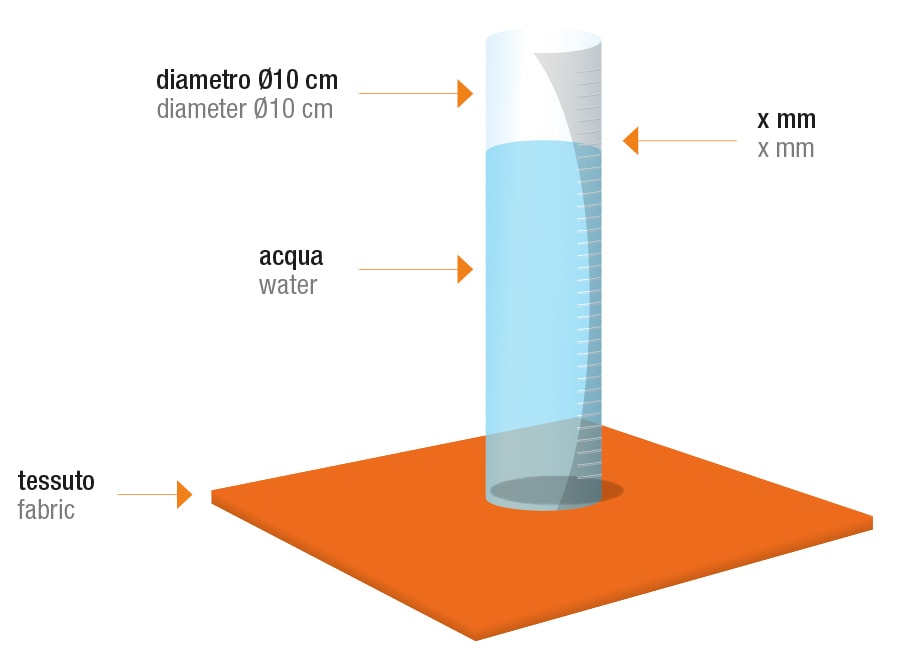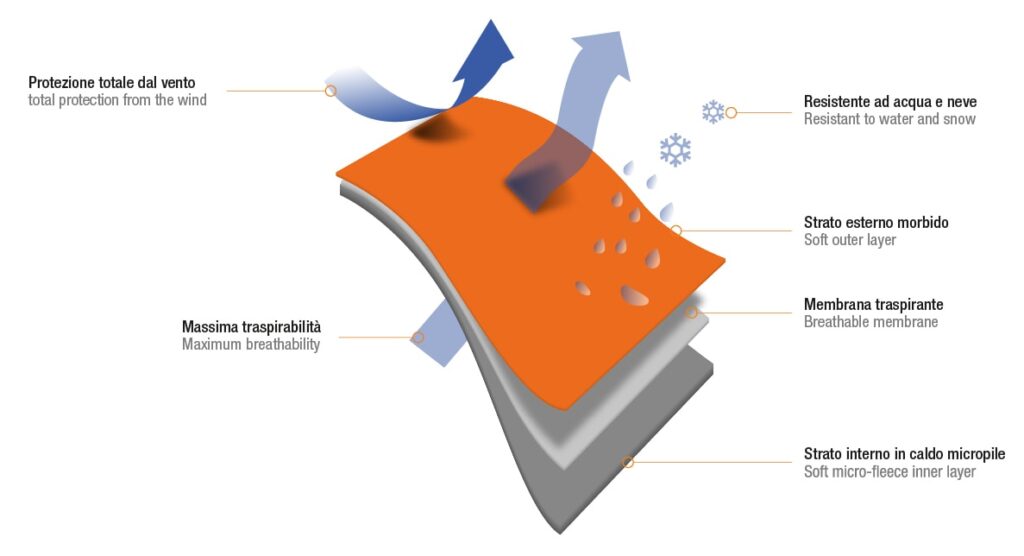Each layer has specific characteristics. The elastic outer membrane makes the garment windproof and water-repellent. The intermediate membrane, made with micro-holes, allows adequate breathability, preventing external water from entering. The internal micro-fleece layer makes the garment soft to the touch and allows a certain degree of heating. The three layers are fixed with a process of pressure and heat, creating a single elastic fabric that is breathable, waterproof and thermal. Thanks to the combination of tight weave and membrane, the softshell is able to retain wind and rain.
The central membrane has the task of blocking the penetration of rain into the fabric fibers. The last membrane, the one in contact with the skin, is almost always made of a soft and fluffy fabric that keeps the body warm and gives a feeling of softness. A jacket to be considered a softshell should therefore have the following characteristics: be waterproof, allow the skin to breathe optimally and be windproof. The advantages of a softshell jacket or vest are many. The garment remains breathable and prevents external agents from passing through (rain and wind). Thermoregulation means you don't have to put on and take off the jacket, moving from hot to cold environments (think of skiing and hiking). The elasticity of the fabric allows incredible freedom of movement even in sports environments. The external layer in compact polyester guarantees excellent results in terms of customization and maximum resistance, of colors and shape, to use and washing.

Softshell is not a completely waterproof fabric, but it offers an excellent balance between resistance to external elements and breathability.
If the fabric were completely waterproof, it would not be able to breathe.
A softshell must have a high level of water resistance (WP – waterproofness). This value measures how much pressure a 10cm diameter water column must exert on the fabric before the material itself lets water penetrate and therefore indicates the waterproofness of a fabric, expressed in mm. Softshell jackets generally have waterproofness from 5,000 mm up to 15,000 mm.
In addition to being waterproof, the softshell must be absolutely breathable (breathability value). The breathability index MVP (moisture vapor permeability) measures the quantity of water vapor (sweat) that can pass through 1 m2 of fabric in a given period of time, and is expressed in g/m2/24 hours. The higher this value, the greater the level of breathability. The basic breathability value is 500 MVP and the most technical products that are normally used for skiing and high-altitude excursions can reach up to 10,000 MVP.

Thanks to the combination of tight weave and membrane, it is able to retain wind and rain. If we analyze the fabric, we can see that it is composed of an external membrane with a very tight weave that will have the task of retaining rain and wind. The central membrane has the task of blocking the penetration of rain into the fibers of the fabric.
The last membrane, the one in contact with the skin, is almost always made of a soft and fluffy fabric that keeps the body warm and gives a sensation of softness.


















